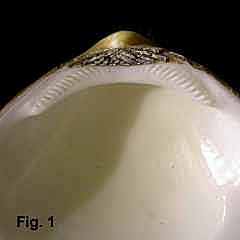|
< Previous family introduction |
|
|
Family Glycymerididae Dog Cockles
|
|
|
The Glycymerididae is a worldwide family of large marine bivalves. There is about 100 species (Huber, 2010), widely distributed in tropical and temperate waters. Shells are mainly 30-50 mm in length, with a few up to 115 mm. The NSW species fall into two groups. The first group (i.e., the first three species treated here) lives in shallow water, and are commonly washed up on beaches, particularly in southern Australia, where they may be abundant after storms. The second group (i.e., the last two species treated here) lives in deeper water and are only collected by dredge or trawl. Species live partly buried in sand, fine gravel, or mud. They are suspension feeders, extracting microscopic particles from seawater which they draw in and pass over the gills, in the usual mode of bivalves. Family Reference Lamprell, K.L. and Whitehead, T. 1992. Bivalves of Australia Volume 1. Crawford House Press, Bathurst, NSW. Coverage All the glycymeridids from NSW are treated here. Identification Notes Species of Glycymerididae are characterised by their taxodont hinge, shown in Fig. 1. The number of teeth in the hinge varies between species, and in some species with age. Among the NSW species the hinge is fairly constant, so it is not useful for species separation, the most useful characters being habitat and external sculpture. All species have a periostracum, either covering most of the shell or restricted to the ventral margin, the detailed structure of which is useful in species identification. Fig. 1: Taxodont hinge of Glycymeris holoserica Additional Species Glycymeris magnificens Iredale, 1929 This species was described from very old, worn single valves dredged from 50-60 fathoms off Montague Island in southern NSW. Other specimens are known from 70-230 m depth in southern NSW. The species is conspicuous because of its size, up to 103 mm in length (Powell, 1979). It may be the same as the New Zealand species Tucetona laticostata (Quoy & Gaimard, 1835).
|
